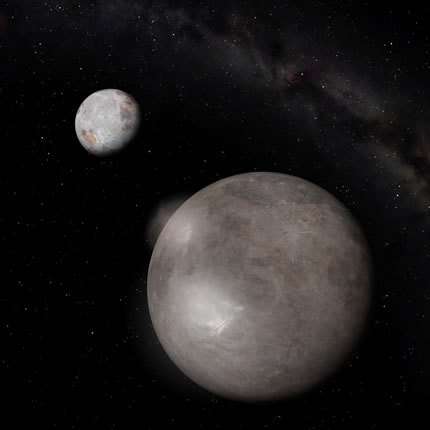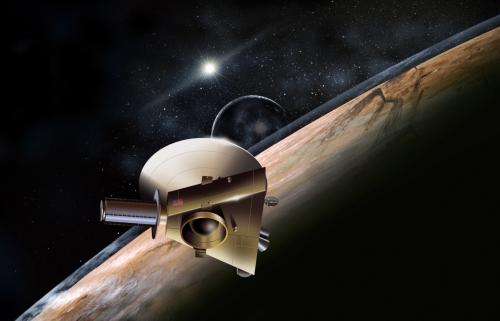How long does it take to get to Pluto?

It's a long way out to the dwarf planet Pluto. So, just how fast could we get there?
Pluto, the Dwarf planet, is an incomprehensibly long distance away. Seriously, it's currently more than 5 billion kilometers away from Earth. It challenges the imagination that anyone could ever travel that kind of distance, and yet, NASA's New Horizons has been making the journey, and it's going to arrive there July, 2015.
You may have just heard about this news. And I promise you, when New Horizons makes its close encounter, it's going to be everywhere. So let me give you the advanced knowledge on just how amazing this journey is, and what it would take to cross this enormous gulf in the Solar System.
Pluto travels on a highly elliptical orbit around the sun. At its closest point, known as "perihelion", Pluto is only 4.4 billion kilometers out. That's nearly 30 AU, or 30 times the distance from the Earth to the sun. Pluto last reached this point on September 5th, 1989. At its most distant point, known as "aphelion", Pluto reaches a distance of 7.3 billion kilometers, or 49 AU. This will happen on August 23, 2113.
I know, these numbers seem incomprehensible and lose their meaning. So let me give you some context. Light itself takes 4.6 hours to travel from the Earth to Pluto. If you wanted to send a signal to Pluto, it would take 4.6 hours for your transmission to reach Pluto, and then an additional 4.6 hours for their message to return to us.
Let's talk spacecraft. When New Horizons blasted off from Earth, it was going 58,000 km/h. Just for comparison, astronauts in orbit are merely jaunting along at 28,000 km/h. That's its speed going away from the Earth. When you add up the speed of the Earth, New Horizons was moving away from the sun at a blistering 160,000 km/h.
Unfortunately, the pull of gravity from the sun slowed New Horizons down. By the time it reached Jupiter, it was only going 68,000 km/h. It was able to steal a little velocity from Jupiter and crank its speed back up to 83,000 km/h. When it finally reaches Pluto, it'll be going about 50,000 km/h. So how long did this journey take?

New Horizons launched on January 19, 2006, and it'll reach Pluto on July 14, 2015. Do a little math and you'll find that it has taken 9 years, 5 months and 25 days. The Voyager spacecraft did the distance between Earth and Pluto in about 12.5 years, although, neither spacecraft actually flew past Pluto. And the Pioneer spacecraft completed the journey in about 11 years.
Could you get to Pluto faster? Absolutely. With a more powerful rocket, and a lighter spacecraft payload, you could definitely shave down the flight time. But there are a couple of problems. Rockets are expensive, coincidentally bigger rockets are super expensive. The other problem is that getting to Pluto faster means that it's harder to do any kind of science once you reach the dwarf planet.
New Horizons made the fastest journey to Pluto, but it's also going to fly past the planet at 50,000 km/h. That's less time to take high resolution images. And if you wanted to actually go into orbit around Pluto, you'd need more rockets to lose all that velocity. So how long does it take to get to Pluto? Roughly 9-12 years. You could probably get there faster, but then you'd get less science done, and it probably wouldn't be worth the rush.
Source: Universe Today





















